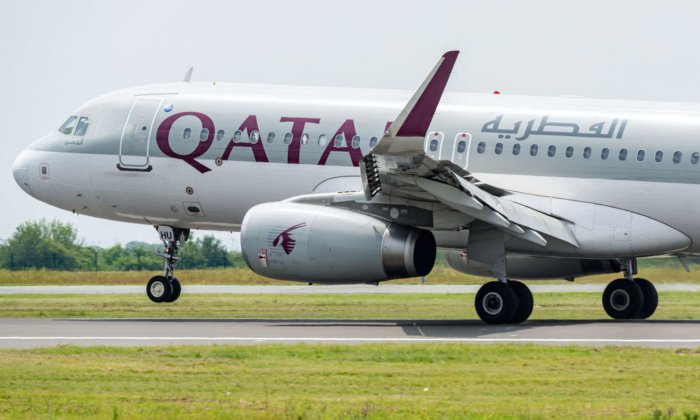Qatar Airways flight to Dublin Airport experiences turbulence
An aviation expert has provided insights on the recent incidents of airline turbulence that resulted in injuries to passengers on two separate flights within a week.
A total of twelve passengers and crew members sustained injuries when a Qatar Airways flight from Doha to Dublin encountered severe turbulence.
This incident marked the second such event in less than a week. On May 22, one passenger lost his life and several others were injured when a Singapore Airlines plane faced extreme turbulence while en route to London.
Dublin Airport issued a statement regarding the Qatar Airways flight incident in the early hours of May 27.
The statement confirmed that flight QR017, originating from Qatar’s capital, safely landed in Dublin after encountering turbulence over Turkey.
Upon landing, emergency services, including airport police and the fire and rescue department, responded as six passengers and six crew members reported injuries from the turbulence experienced over Turkey.
Eight passengers were subsequently taken to the hospital for further treatment.
Dublin Airport announced that the return flight to Doha would proceed as planned, albeit with delays.
Flight operations at Dublin Airport remained unaffected and continued as scheduled following the incident.
Reports from the Irish media service RTE shared videos on social media where passengers recounted the harrowing experience during the turbulence, which occurred during the onboard meal service.
Aviation Expert Suggests Coincidental Nature of the Incidents
Eight Australians were injured in the incident on the Singapore Airlines flight last Tuesday. Aviation Projects managing director and aviation expert, Keith Tonkin, stated that the two occurrences were likely coincidental.
Tonkin mentioned that the flights involved different airlines traversing different regions with varying operational procedures.
He emphasized that the absence of the seatbelt sign and the meal service at the time of the Qatar Airways turbulence could contribute to such incidents.
Tonkin noted that the pilot’s decision to continue to the planned destination without a diversion indicated that the turbulence was less severe compared to the Singapore Airlines flight experience.
He stressed that minimizing the time spent without a seatbelt is crucial in preventing injuries during turbulence.
Tonkin highlighted the importance of maintaining heightened awareness of turbulence despite its common occurrence during flights.
Ian Douglas, a senior lecturer at the University of New South Wales (UNSW) School of Aviation, concurred that passengers with fastened seatbelts aboard the Singapore Airlines flight were unharmed.
Douglas advised passengers to adhere to safety instructions by keeping their seatbelts fastened during flights.
According to the Australian Civil Aviation Authority (CASA), turbulence is categorized into six levels, ranging from light chop to extreme turbulence, with severe and extreme events being less frequent.





